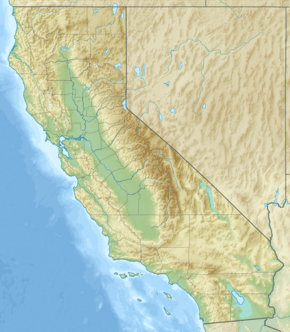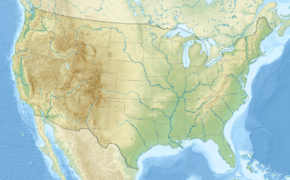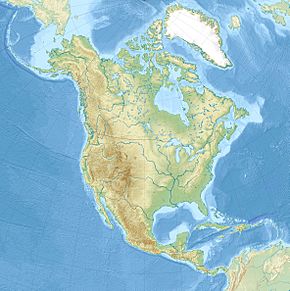Brea, California facts for kids
Quick facts for kids
Brea, California
|
|||
|---|---|---|---|

Market City Cafe in Brea downtown
|
|||
|
|||

Location of Brea in Orange County, California.
|
|||
| Country | United States | ||
| State | California | ||
| County | Orange | ||
| Incorporated | February 23, 1917 | ||
| Named for | Spanish for "natural asphalt" or "tar" | ||
| Government | |||
| • Type | Council-Manager | ||
| Area | |||
| • Total | 12.21 sq mi (31.61 km2) | ||
| • Land | 12.17 sq mi (31.51 km2) | ||
| • Water | 0.04 sq mi (0.10 km2) 0.26% | ||
| Elevation | 361 ft (110 m) | ||
| Population
(2020)
|
|||
| • Total | 47,325 | ||
| • Density | 3,889.30/sq mi (1,501.72/km2) | ||
| Time zone | UTC−8 (PST) | ||
| • Summer (DST) | UTC−7 (PDT) | ||
| ZIP codes |
92821–92823
|
||
| Area codes | 657/714, 562 | ||
| FIPS code | 06-08100 | ||
| GNIS feature IDs | 1660373, 2409897 | ||
Brea (/ˈbreɪə/; Spanish for 'tar') is a city in northern Orange County, California. The population as of the 2010 census was 39,282. It is 33 miles (53 km) southeast of Los Angeles. Brea is part of the Los Angeles metropolitan area.
The city began as a center of crude oil production, was later propelled by citrus production. It is a significant retail center, including the Brea Mall and downtown Brea. The city has an extensive public art program which began in 1975 and continues today with over 140 artworks in the collection placed and located throughout the city.
Contents
History
Indigenous
The area began as part of the homelands of the Tongva, who lived in the area for thousands of years before any contact was made with Europeans. The tribe established numerous villages in the area interconnected by extensive trails for travel and trade with neighboring Indigenous nations. The closest known village site to the city of Brea today is Hutuknga.
Spanish era
The area was visited on July 29, 1769, by the Spanish Portolá expedition – the first Europeans to see inland parts of Alta California. The party camped in Brea Canyon, near a large native village and a small pool of clean water. A historical marker dedicated to his visit stands in Brea Canyon just north of town.
The village of Olinda was founded in present-day Carbon Canyon at the beginning of the 19th century and many entrepreneurs came to the area searching for "black gold" (petroleum).
American era
In 1894, the owner of the land, Abel Stearns, sold 1,200 acres (4.9 km2) west of Olinda to the newly created Union Oil Company of California, and by 1898 many nearby hills began sporting wooden oil drilling towers on the newly discovered Brea-Olinda Oil Field. In 1908 the village of Randolph, named for railway engineer Epes Randolph, was founded just south of Brea Canyon for oil workers and their families. Baseball legend Walter Johnson grew up in Olinda at the start of the 20th century where he worked in the surrounding oil fields as a youth.

The villages of Olinda and Randolph grew and merged as the economy boomed. On January 19, 1911, the town's map was filed under the new name of Brea, from the Spanish language word for natural asphalt, also called bitumen, pitch or tar. With a population of 752, Brea was incorporated on February 23, 1917, as the eighth official city of Orange County.
As oil production declined, some agricultural development took place, especially lemon and orange groves. In the 1920s, the Brea Chamber of Commerce promoted the city with the slogan “Oil, Oranges, and Opportunity.”
In 1950, Brea had a population of 3,208, which is 641 more than ten years prior. The citrus groves gave way gradually to industrial parks and residential development. In 1956, Carl N. Karcher opened the first two Carl's Jr. restaurants in Anaheim, California and Brea, California. The opening of the Orange Freeway (57) and the Brea Mall in the 1970s spurred further residential growth, including large planned developments east of the 57 Freeway in the 1980s, 1990s, and 2000s.
In the late 1990s, a 50-acre (200,000 m2) swath of downtown Brea centered on Brea Boulevard and Birch Street was heavily redeveloped into a shopping and entertainment area with movie theaters, sidewalk cafes, a live comedy club from The Improv chain, numerous shops and restaurants, and a weekly farmer's market. It is locally known and signed as Downtown Brea. The downtown area opened in 2000.
Sunset magazine named Brea one of the five best suburbs to live in the Western United States in early 2006.
Geography
According to the United States Census Bureau, the city has an area of 12.1 square miles (31 km2). 12.1 square miles (31 km2) of it is land and 0.26% is water.
It is bordered by unincorporated Orange County and Los Angeles County to the north and east, La Habra to the west, Fullerton to the southwest, Placentia to the south, Chino Hills to the northwest, and Yorba Linda to the southeast.
Climate
According to the Köppen Climate Classification system, Brea has a hot-summer Mediterranean climate, abbreviated "Csa" on climate maps.
| Climate data for Brea, California | |||||||||||||
|---|---|---|---|---|---|---|---|---|---|---|---|---|---|
| Month | Jan | Feb | Mar | Apr | May | Jun | Jul | Aug | Sep | Oct | Nov | Dec | Year |
| Mean daily maximum °C (°F) | 21 (69) |
21 (70) |
22 (72) |
23 (74) |
24 (76) |
27 (80) |
29 (85) |
30 (86) |
30 (86) |
27 (81) |
24 (75) |
21 (69) |
25 (77) |
| Mean daily minimum °C (°F) | 8 (47) |
9 (48) |
10 (50) |
11 (52) |
14 (57) |
16 (60) |
18 (64) |
18 (64) |
17 (62) |
14 (57) |
11 (51) |
8 (46) |
13 (55) |
| Average precipitation mm (inches) | 64 (2.5) |
79 (3.1) |
69 (2.7) |
28 (1.1) |
5.1 (0.2) |
0 (0) |
0 (0) |
10 (0.4) |
7.6 (0.3) |
7.6 (0.3) |
30 (1.2) |
61 (2.4) |
361.3 (14.2) |
Demographics
| Historical population | |||
|---|---|---|---|
| Census | Pop. | %± | |
| 1920 | 1,037 | — | |
| 1930 | 2,435 | 134.8% | |
| 1940 | 2,567 | 5.4% | |
| 1950 | 3,208 | 25.0% | |
| 1960 | 8,487 | 164.6% | |
| 1970 | 18,447 | 117.4% | |
| 1980 | 27,913 | 51.3% | |
| 1990 | 32,873 | 17.8% | |
| 2000 | 35,410 | 7.7% | |
| 2010 | 39,282 | 10.9% | |
| 2020 | 47,325 | 20.5% | |
| U.S. Decennial Census | |||
2010
The 2010 United States Census reported that Brea had a population of 39,282. The population density was 3,243.9 inhabitants per square mile (1,252.5/km2). The racial makeup of Brea was 26,363 (67.1%) White (52.7% Non-Hispanic White), 549 (1.4%) African American, 190 (0.5%) Native American, 7,144 (18.2%) Asian, 69 (0.2%) Pacific Islander, 3,236 (8.2%) from other races, and 1,731 (4.4%) from two or more races. Hispanic or Latino of any race were 9,817 persons (25.0%).
The census reported that 39,213 people (99.8% of the population) lived in households, 69 (0.2%) lived in non-institutionalized group quarters, and 0 (0%) were institutionalized.
There were 14,266 households, out of which 5,043 (35.3%) had children under the age of 18 living in them, 8,132 (57.0%) were opposite-sex married couples living together, 1,605 (11.3%) had a female householder with no husband present, 632 (4.4%) had a male householder with no wife present. There were 569 (4.0%) unmarried opposite-sex partnerships, and 100 (0.7%) same-sex married couples or partnerships. 3,070 households (21.5%) were made up of individuals, and 1,265 (8.9%) had someone living alone who was 65 years of age or older. The average household size was 2.75. There were 10,369 families (72.7% of all households); the average family size was 3.23.
The population was spread out, with 9,057 people (23.1%) under the age of 18, 3,654 people (9.3%) aged 18 to 24, 10,669 people (27.2%) aged 25 to 44, 10,952 people (27.9%) aged 45 to 64, and 4,950 people (12.6%) who were 65 years of age or older. The median age was 38.7 years. For every 100 females, there were 95.2 males. For every 100 females age 18 and over, there were 91.9 males.
There were 14,785 housing units at an average density of 1,221.0 units per square mile (471.4 units/km2), of which 9,266 (65.0%) were owner-occupied, and 5,000 (35.0%) were occupied by renters. The homeowner vacancy rate was 1.3%; the rental vacancy rate was 5.3%. 26,889 people (68.5% of the population) lived in owner-occupied housing units and 12,324 people (31.4%) lived in rental housing units.
According to the 2010 United States Census, Brea had a median household income of $82,055, with 5.6% of the population living below the federal poverty line.
2000
There were 13,067 households, out of which 34.6% had children under the age of 18 living with them, 56.6% were married couples living together, 10.5% had a female householder with no husband present, and 28.8% were non-families. 23.0% of all households were made up of individuals, and 8.5% had someone living alone who was 65 years of age or older. The average household size was 2.70 and the average family size was 3.21.
In the city, the population was spread out, with 25.6% under the age of 18, 8.5% from 18 to 24, 30.4% from 25 to 44, 24.1% from 45 to 64, and 11.4% who were 65 years of age or older. The median age was 36 years. For every 100 females, there were 95.3 males. For every 100 females age 18 and over, there were 91.9 males.
The median income for a household in the city was $64,820, and the median income for a family was $68,423. Males had a median income of $50,500 versus $35,674 for females. The per capita income for the city was $26,307. About 3.4% of families and 5.3% of the population were below the poverty line, including 6.7% of those under age 18 and 5.2% of those age 65 or over.
Economy
Top employers
According to the city's 2019 Comprehensive Annual Financial Report, the top employers in the city are:
| # | Employer | # of employees |
|---|---|---|
| 1 | Bank of America | 3,000 |
| 2 | Mercury Insurance Group | 1,440 |
| 3 | Albertsons | 1,321 |
| 4 | Beckman Coulter | 906 |
| 5 | Brea Olinda Unified School District | 713 |
| 6 | Kirkhill - TA Company | 638 |
| 7 | Nationwide Mutual Insurance Company | 460 |
| 8 | Bristol Industries | 435 |
| 9 | Zodiac Inflight Innovations | 390 |
| 10 | Peterson Brothers Construction | 375 |
Education
The city is primarily served by the Brea Olinda Unified School District which operates six elementary schools, one junior high school (Brea Junior High School), one high school (Brea Olinda High School) and one continuation high school (Brea Canyon High School). A small portion of Brea is also directed to Sonora High School in La Habra in the Fullerton Joint Union High School District. That small portion is also directed to the La Habra City School District. In addition, students can also take an assessment to place in nearby Troy High School in Fullerton, also part of the Fullerton High School District.
There are many private schools in Brea, the Brea Head Start (Pre) Brea Olinda Friends School (Pre-6), Brea Congregational Pre-School, Brea Foursquare Church (Pre-5), Brea United Methodist Pre-School ("BUMPS"), Carbon Canyon Christian School (K-12), Christ Lutheran School (Pre-8), St. Angela Merici Parish School (TK-8), and Montessori of Brea (K-6). Brea is also home to the Southern California College of Business and Law and the Southern California extension of Golden Gate Baptist Theological Seminary.
School awards
Local schools have won several awards. Brea Olinda High School and Olinda Elementary School have been named Blue Ribbon Schools. Additionally, Arovista Elementary, Country Hills Elementary, Fanning Elementary, Mariposa Elementary, Olinda Elementary, Brea Junior High and Brea Olinda High schools have been named California Distinguished Schools. Laurel Elementary received a Title I Academic Achievement Award. Brea Junior High School and Brea Olinda High School have been named California Gold Ribbon Schools.
Notable people
- Cody Fajardo, Quarterback for the Montreal Alouettes
- Stephanie J. Block, Broadway actress/singer
- James Cameron, film director/producer/screenwriter
- JoAnn Dean Killingsworth, actress & dancer, first person to play Snow White at Disneyland
- Travis Denker, Major League baseball player (San Francisco Giants)
- Kyle Fogg, professional basketball player
- Tommy Gallarda, Pro Football player (Atlanta Falcons)
- James Hetfield, musician (Metallica)
- Walter Johnson, Major League baseball pitcher for the Washington Senators
- Randy Jones, Major League baseball player (San Diego Padres)
- Joe Maddon, Major League baseball manager (Chicago Cubs)
- Alli Mauzey, Broadway actress/singer
- Evan Moore, Pro Football player (Green Bay Packers)
- Jeanette Pohlen, Women's National Basketball Association player (Indiana Fever)
- Cruz Reynoso, jurist
- Ken Spears, animator & co-founder of Ruby-Spears Productions
- Caroline Zhang, figure skater
- Nikki Ziering, model and actress
- Norma Zimmer, singer
- Mark Rober, YouTuber and former NASA and Apple engineer
Sister cities
Brea is twinned with:
 Anseong, South Korea (2011)
Anseong, South Korea (2011) Hannō, Japan (1980)
Hannō, Japan (1980) Lagos de Moreno, Mexico (1969)
Lagos de Moreno, Mexico (1969)
See also
 In Spanish: Brea (California) para niños
In Spanish: Brea (California) para niños








